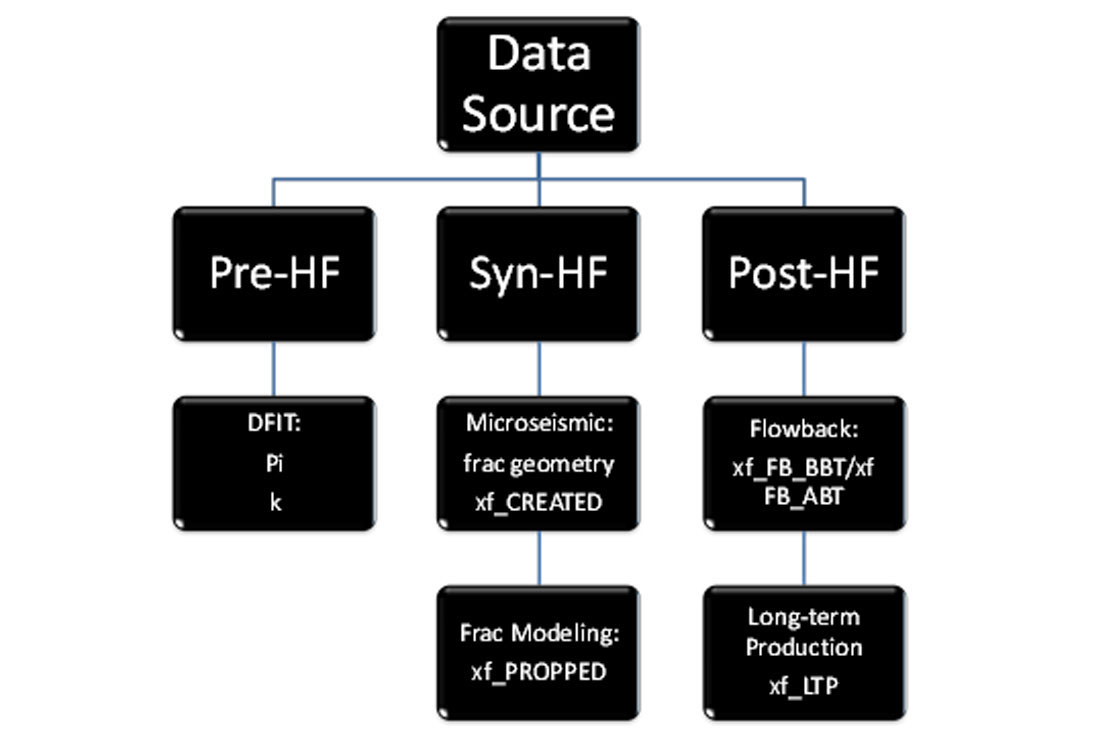There are now multiple geophysics- and engineering-based methods for the evaluation of hydraulic fracture stimulation effectiveness associated with multi-fractured horizontal wells (MFHWs) completed in unconventional gas and light oil reservoirs. These methods, which can be classified according to the timing of data collection relative to the main hydraulic fracture stimulation (see Figure 1), will provide different types of information for fracture characterization. Diagnostic fracture injection tests (DFIT), performed prior to the main stimulation treatment, are used to derive information about in-situ stress (closure pressure), leakoff mechanisms, reservoir pressure and formation permeability, which is useful for the main hydraulic fracture treatment design. However, the DFIT data may not be used to evaluate the results of the main stimulation treatment. Microseismic data, collected during the main stimulation treatment, may be interpreted for created fracture length or area, but may not necessarily provide information about what fraction of the created fracture(s) are conductive and producing formation fluids to the well. Pressure and rate data collected during the main treatment may be interpreted with frac models to derive a created and propped fracture half length. Rate-transient analysis, which is analogous to pressure-transient analysis (well-testing), can be used to evaluate short and long-term production data for hydraulic fracture properties such as total effective length (or effective area) and fracture conductivity. Techniques for long-term production analysis are relatively well established, while analysis of short-term (flowback) data is relatively new. Flowback data consists of (usually) high resolution rate and pressure data collected immediately after fracture stimulation, and is often dominated by production of hydraulic-fracturing fluids. This short-term data, dominated by flow properties of the fractures themselves, provide a unique opportunity to characterize the hydraulic fractures immediately after they are created. Comparison with properties derived from long-term production analysis provides an opportunity to evaluate fracture performance degradation or enhancement over time.

In this work, fracture property estimates from these multiple sources are compared for a multi-fractured horizontal well producing from a tight oil reservoir to gain insight into dynamic changes in hydraulic fracture properties over time. A loss of effective producing length is observed through comparison of flowback and long-term production analysis; the possible causes of this reduction include gas breakthrough to the fractures from the formation once flowing pressure drops below bubble point pressure, reduction of fracture conductivity, and secondary fracture contribution.
The main focus of this study is the evaluation of hydraulic fracture properties before and after breakthrough of formation fluids during the flowback period. The rate-transient analysis principles used in the analysis are explained in detail, including a discussion of how complex fracture, reservoir and fluid behavior are incorporated into the analysis. Flowback analysis is a new and evolving field – future areas of research will be highlighted.











Join the Conversation
Interested in starting, or contributing to a conversation about an article or issue of the RECORDER? Join our CSEG LinkedIn Group.
Share This Article